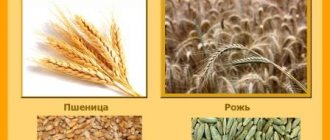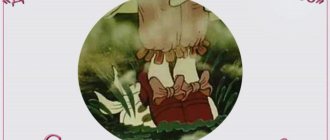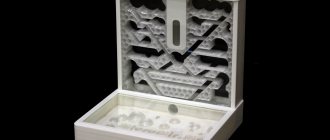Article prepared by: Art. teacher Tabunshchik L.N.
Project participants: Savchenko V.A. , Kholoden L.S., Tabunshchik L.N.
Bread is a product of human labor; it has always been considered a symbol of well-being and prosperity.
“Bread is the head of everything” is one of the most common proverbs of our people. And not in vain, because not a single day of our life goes by without bread, both on holidays and on weekdays, bread remains the main product on our table. And all because we really love bread and baked goods. And bread has its own international holiday - World Bread Day, which is celebrated on October 16th.
History of the holiday World Bread Day
On October 16, 1945, the Food and Agriculture Organization of the United Nations was created. In 1950, this organization proposed that the UN General Assembly approve the date October 16 as World Bread Day. In 1979, at the insistence of the International Association of Bakers and Confectioners, the UN re-agreed the main holiday of bread on this day. World Bread Day is not the only holiday dedicated to bread that is celebrated in our country. For example, the Slavic holiday of the Savior of Bread is celebrated on August 29 and is associated with the completion of the grain harvest. Previously, on this day they baked bread from the new harvest wheat, lit it and consumed it with the whole family.
On World Bread Day, many countries host various exhibitions of bakers' and confectioners' products, fairs, master classes, competitions, and sports competitions. Event participants decorate their outfits with cereals and sing cheerful ditties about bread. And also on this day, charity events are organized to distribute free bread to all those in need.
Interesting Facts
The history of bread began a very long time ago. According to historical data, the first bread products appeared about 8 thousand years ago. Outwardly, they resembled flat cakes and were baked on hot stones. The ingredients for such flatbreads were cereal and water. There is no single version among historians about how ancient people figured out how to bake the first bread. But it is widely believed that this happened by accident when the grain mixture overflowed the edge of the pot and became baked. Since then, humanity has been eating baked bread.
Each person on average eats almost 7 tons of bread and about 35 thousand rolls in his entire life.
In the old days, people from the upper class preferred to eat white bread, while black and gray bread was eaten by the lower class (the poor) because of its color. Since the 20th century, some sections of high society have learned about the benefits and nutritional value of rye and gray product, and it has become increasingly popular.
Bread is a product that accompanies us from birth to old age. The value of bread cannot be measured by anything.
Many children do not know about the work of people who grow bread and treat bread carelessly .
Together with the children from the preparatory group, we found out where the rolls really “grow”, traced the entire path of bread : from the grain to our table, and got acquainted with the variety of bakery products .
While working on the project, we tried to draw the children’s attention to the efforts with which bread appears on our table : what professions people work to ensure that bread “comes” to our table.
Project goal: To foster a caring attitude towards bread .
Project objectives :
— To form in children initial ideas about the process of growing bread . Expand children's knowledge about bread (black - rye, white - wheat). To give an idea that every person needs bread
— to form children’s knowledge about the work of a grain grower , combine operator, and tractor driver;
- the formation of basic ecological knowledge about the features of growing grain plants, understandable to a preschool child;
— development of creative abilities;
- support the natural interest and curiosity of children;
- to instill in children a sense of respect for the work of people ( grain growers , bakers , respect for bread , the nature of their native land and reasonable human intervention;
- cultivate qualities such as attention, patience, hard work.
To solve the problems, the following methods and forms of work :
Conversations: “How is bread ”, “How can we preserve bread ?”, “What are cereals and what is bread ?”
Consideration: “Wheat and rye” (ears).
Consideration: a series of plot paintings:
“How our ancestors grew bread .”
Ethical conversations based on read works of fiction:
M. Prishvin “Fox Bread ”, K. G. Paustovsky “Hot Bread ”.
Planting seeds of wheat, rye, oats.
Observations on the germination of seeds (wheat, rye) in different conditions (Why do plants need water).
Labor activity: kneading dough and baking rye bread.
Watching cartoons: “Spikelet”, “Kolobok”
View the presentation: “Like a spikelet of bread came to the table.”
Artistic and creative activities:
Modeling from salt dough and painting of finished products.
Listening to: songs “Spikelet” (about bread , “Loaves and cheesecakes”)
Singing songs “Okay, okay”, “I bake, bake, bake”, an excerpt from the song “Guests have come to us”
Round dance "Loaf"
Learning proverbs about bread , solving riddles.
During the implementation of the project, children became acquainted with the peculiarities of growing grain plants, learned to find signs of similarities and differences between grain crops;
— expanded their vocabulary, learned to justify the value of each type of work activity related to the production of grain and bread , the names of bakery products ;
— preschoolers have developed a strong interest in the work of adults and respect for the work of adults.







